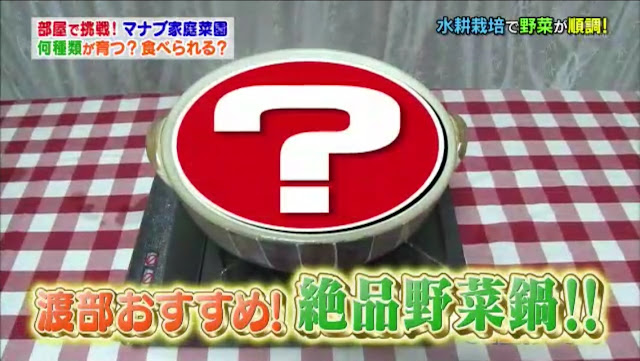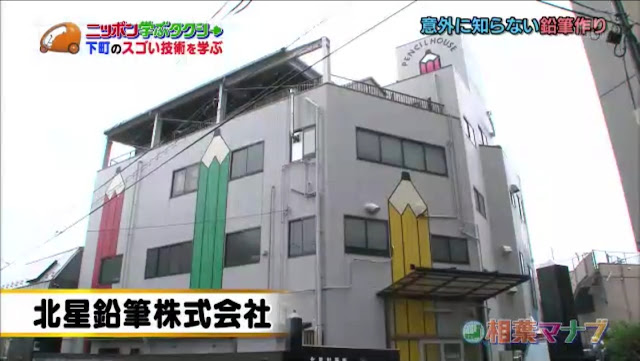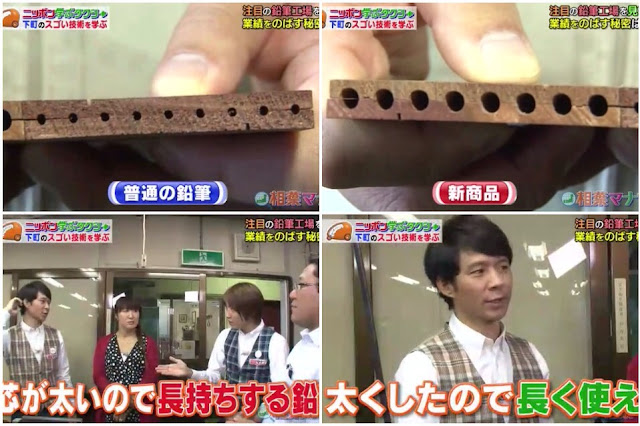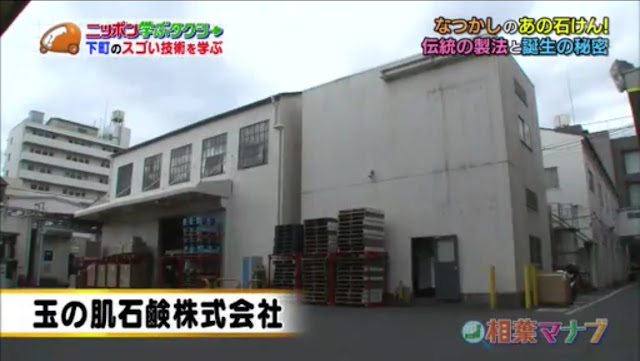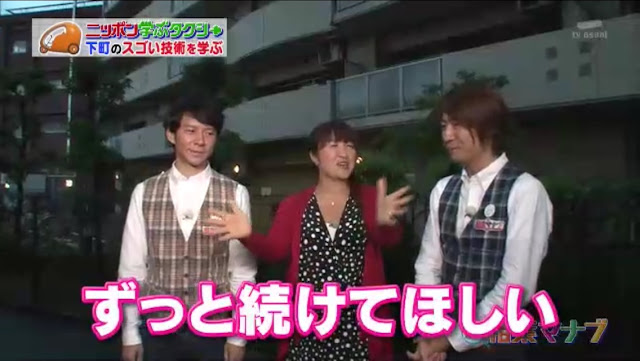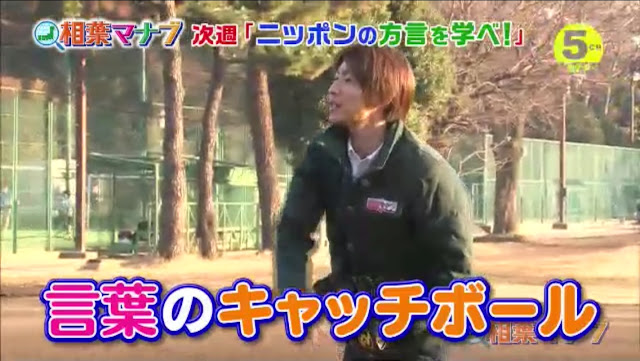日本語の勉強を再スタート(もう一度)
Learning Japanese from start (again)
日語之重新開始(再)
【4】文型 Sentence Pattern 句型
☆
EXTRA INFORMATION 課外知識
Before revising this three week's work…
在復習這三星期學到的東西之前…
I was browsing through《Pictorial Encyclopedia of JAPANESE LIFE and EVENT》and I came across something interesting…
幾天前翻了翻《Pictorial Encyclopedia of JAPANESE LIFE and EVENT》,發現有趣的內容…
Understanding Japanese psychology through Language (Page 110 - )
(通過語言的使用了解日本人的心理)
I find that it matches what I observed in Japanese variety shows and dramas. It is also useful for understanding when these expressions are used so I shall share it!
我覺得描寫的符合我在日本綜藝節目和連續劇裡留下的印象,而且內容對理解這些用詞的使用時機很有幫助,所以就翻譯一下然後分享~!
「頑張る (がんなる)」
As described in the encyclopedia,「がんなる」means to carry one's task, putting up with difficulties and striving to overcome all hardships. Japanese love using this word and the virtue of 「がんなる」has long been encouraged in Japan (This will be related to characteristics of modern Japanese…).
如我提到的百科全書所解釋的,「がんなる」的意思是努力克服難關,完成一項任務/事情。日本人很喜歡用這個詞。在日本,「がんばる」的美德是被鼓勵的(這就關係到現代日本人的性格特徵…)。
To add on, 「がんばる」appears more often in the form「がんばって」or「がんばってください」.
補充一點,「がんばる」通常會以「がんばって」或「がんばってください」的形式出現。
「すみません」
The encyclopedia writes: Japanese uses sumimasen all the time.
那本百科全書寫到:日本人總是在用「すみません」。
「すみません」has the meaning “however much I apologise, I cannot offer enough excuse”.
「すみません」有著「無論我怎麼道歉,我都無法表示歉意」的意思。
「すみません」is a very useful word that can be used in a variety of situations, but it is important to note that there are tone differences in different context of usage.
「すみません」是個可以在不同情形使用的的詞,但是要注意在不同的情形使用時,尾音的升降有差別。
すみません (tone goes up at ん) is for getting attention, like when you want to tell someone something or when you want to place an order at a restaurant.
すみません(尾音升高)用於引起注意,例如當你想告訴某人什麼事時或者要點餐時。
すみません (tone goes down at ん) can be used for apologising or expressing graditude (ie. Thank you. I'm sorry to have troubled you.)
すみません(尾音降低)用於表示歉意或者表示謝意(例:謝謝,麻煩你了。)
It was also mentioned that Japanese protect themselves unconsciously by apologising… I have a deep impression on this as saying「ごめんなさい」frequently was higlighted in Arashi ni shiyagare as a means of Aiba san to defend himself unconsiously…
書裡也提到日本人一直道歉是一種潛意識的自我保護行為… 因為在嵐にしやがれ裡,相葉曾被指出他有一直說「ごめんなさい」的習慣,那被解釋為一種潛意識地保護自己的手段,所以對這點留下了深刻的印象…
Using「すみません」to apologise is only applicable for small mistakes or impoliteness.
「すみません」只能用於為小失誤和小失禮道歉喔…
「どうも」
「どうも」was described as the most convenient word of Japanese Language…
「どうも」被形容為最便利的日語詞彙…
「どうも」was originally used as an intensifier of thanks or apology, but can be a substitute for「こんにちわ」、「さよなら」、「おじゃましました」and「お世話になります」。
「どうも」原本只有增加程度的功能,但在實際使用時,可以替代「こんにちわ」、「さよなら」、「おじゃましました」和「お世話になります」。
Sometimes you hear people saying「どうもどうも」。
有時會聽到「どうもどうも」的用法。
Level of politeness (H —> L)
禮貌指數(高 —> 低):
どうもありがとうございます
ありがとうございます / ありがとうございました(past tense 過去式)
どうもありがとう
ありがとう
(Past tense is used when it is the end of the conversation or when you want to end the conversation…)
(過去式用作對話的句點,或者當你想結束對話時也可以使用…)
In class, we were told that using「ありがとう」in plain form is very rude.
課上,老師說單單使用「ありがとう」是很不禮貌的。
In variety shows and animes, the most commonly heard form is the plain「ありがとう」. For dramas, it varies according to situations.
綜藝節目和動漫裡最常聽見的是不經修飾的「ありがとう」。連續劇的話則是看場合。
Observe the usage in dramas, especially those that involves junior-senior relationships or work environment.
可以留意有前輩後輩關係或者工作環境的連續劇裡的用法。
For start, I am learning the polite form, of course.
對於初學者來說,當然是先學所謂的禮貌形。
「よろしくお願いします」
「願い (ねがい)」is the word for wish or request.
「願い (ねがい)」有著希望和請求的意思。
It means “Please take care of me”, an all purpose phrase with subtle difference in different context.
意思為「請照顧我」(常翻譯為「請多指教」),是一個在不同場合裡有著微妙的差別的多用途的短句。
「よろしくお願いします」can be used when you are asking for help, seeking someone's patience and attention, as a measure of respect for the person addressed, or even when asking people to vote for you…
「よろしくお願いします」可以用於向其他人尋求幫助、請對方機遇耐心及注意、對於別人的尊重,亦可用於拉票…
Situation of use:
使用場合:
1)When meeting the person for the first time, saying「はじめまして、(Family name or Full name) です。どうぞよろしくお願いします。」in hope that the future relationship will go well.
1)初次見面時,說「はじめまして、(姓氏或者姓名)です。どうぞよろしくお願いします。」是出於想讓往後的交往順利的心情。
2)When asking something to be done, in hope that it will eventuate, you say「よろしくお願いします」.
2)要求並且希望某件事完成時可以說「よろしくお願いします」。
3)As a parting phrase after a business transaction (the reason is quite similar to 1).
3)作為一筆談成的生意的結束語(使用原因和1相似)。
The casual expression will be「どうぞよろしく」,the most polite expression will be「どうぞよろしくお願いします」 (The longer the form, it most likely will be the politest).
較隨意的表達是「どうぞよろしく」,最禮貌的表達方式是「どうぞよろしくお願いします」(通常形態越長,禮貌度越高)。
復習 (ふくしゅう)
Revision of basic and conversational sentence structures, with reference to《MINNA NO NIHONGO 1-1》.
以《大家的日語 1-1》為參考,複習基本和會話句型。
Forget what I wrote in the first post.
忘了我在第一章裡寫的東西。
S - sentence 句子
…私も研究者(けんきゅうしゃ)です。(✖️)
⑤ N1 の N2
N1 modifies N2.
N1 用來修飾 N2。
(i)
One of the functions of「の」is to indicate affiliation of N2 to N1.
「の」的其中一個功能是表示N2和N1的從屬關係。
N1:School name, Company name, Department, etc. 學校名稱、機構名稱、部門等。
N2:Title, status, item, etc. 職位、身份等。
さくら大学の教師(きょうし)
Teacher of Sakura University
櫻花大學的教師
(ii)
N1 explains/describes N2
⑥ これ/それ/あれ
⑩ そうですか(falling tone 尾音降低)
「そうですか (falling tone)」is an example of「相槌 (あいづち)」in Japanese Language.
「そうですか (尾音降低)」是日語裡的「相槌 (あいづち)」的一種。
「相槌」用於對話,表示聽者有在聽,和/或者了解說話者所說的事。
Examples 例子:
「そうですか (尾音降低)」用於表示某人收到了新的訊息並且明白了這個訊息。
田中:この本は鈴木さんのですか?
Tanaka:Is this book yours?
田中:這本書是(鈴木小姐)你的嗎?
鈴木:いいえ、(違います)。(それは)山田さんの(本)です。
Suzuki:No, it's Mr Yamada's(book).
鈴木:不,那是山田先生的(書)。
The teacher says that「あなた」can be rude, so avoid using it to address people… Instead address other people by their「family name / full name + さん」(or「family name + せんせい」for teacher, doctor, professions you address as sensei / 「family name + job title」).
老師說「あなた」聽起來很不禮貌,所以避免用來直接稱呼別人… 稱呼別人時用「姓氏/全名 + さん」(或者「姓氏 + 老師」來稱呼教師、醫生、其他可被成為老師的職業 / 「姓氏 + 職位」)。
It means “Please take care of me”, an all purpose phrase with subtle difference in different context.
意思為「請照顧我」(常翻譯為「請多指教」),是一個在不同場合裡有著微妙的差別的多用途的短句。
「よろしくお願いします」can be used when you are asking for help, seeking someone's patience and attention, as a measure of respect for the person addressed, or even when asking people to vote for you…
「よろしくお願いします」可以用於向其他人尋求幫助、請對方機遇耐心及注意、對於別人的尊重,亦可用於拉票…
Situation of use:
使用場合:
1)When meeting the person for the first time, saying「はじめまして、(Family name or Full name) です。どうぞよろしくお願いします。」in hope that the future relationship will go well.
1)初次見面時,說「はじめまして、(姓氏或者姓名)です。どうぞよろしくお願いします。」是出於想讓往後的交往順利的心情。
2)When asking something to be done, in hope that it will eventuate, you say「よろしくお願いします」.
2)要求並且希望某件事完成時可以說「よろしくお願いします」。
3)As a parting phrase after a business transaction (the reason is quite similar to 1).
3)作為一筆談成的生意的結束語(使用原因和1相似)。
The casual expression will be「どうぞよろしく」,the most polite expression will be「どうぞよろしくお願いします」 (The longer the form, it most likely will be the politest).
較隨意的表達是「どうぞよろしく」,最禮貌的表達方式是「どうぞよろしくお願いします」(通常形態越長,禮貌度越高)。
☆
Revision of basic and conversational sentence structures, with reference to《MINNA NO NIHONGO 1-1》.
以《大家的日語 1-1》為參考,複習基本和會話句型。
Forget what I wrote in the first post.
忘了我在第一章裡寫的東西。
Legend 說明
N - noun 名詞S - sentence 句子
① N1 は N2 です。
(i)
The particle「は (wa)」indicates that the word before it is the topic of the sentence. In this case, it will be N1.
出現在助詞「は (wa)」前面的詞就是句子裡的主題。在這裡,N1是主題。
(ii)
Nouns used with「です」is used as the predicate(述語),in this case N2.
和「です」一起使用的名詞用作謂語的功能,在這裡就是N2。
「です」expresses politeness (polite form of「だ」).
「です」是「だ」的禮貌形。
「です」indicates judgement or assertions.
「です」表示判斷和主張。
「です」is like「be (is/am/are)」.
「です」有著「就是」的意思。
當韻母「i」和「u」出現在清音前面或後面,會出現被「消音」的情形。相同的情況也出現在以「~です」和「~ます」結束句子時。
So even though「ありがとうございます」is romanised as「arigatou gozaimasu」, it is actually pronounced as「arigatō gozaimas」.
所以說,雖然「ありがとうございます」的羅馬音寫作「arigatou gozaimasu」,實際發音卻是「arigatō gozaimas」。
According to this natural acoustic phenomenon「学生 (がくせい)」is pronounced as 「gakksee」.
根據這語音學的自然現象,「学生 (がくせい)」的發音實際為「gakksee」。
※ For romanisation,「aa」can be simplified as「ā」, same applies for the other vowels.
※ 寫羅馬音時,「aa」可以省略為「ā」,其他元音也一樣。
Examples of exceptions 一些例外:
The particle「は (wa)」indicates that the word before it is the topic of the sentence. In this case, it will be N1.
出現在助詞「は (wa)」前面的詞就是句子裡的主題。在這裡,N1是主題。
(ii)
Nouns used with「です」is used as the predicate(述語),in this case N2.
和「です」一起使用的名詞用作謂語的功能,在這裡就是N2。
「です」expresses politeness (polite form of「だ」).
「です」是「だ」的禮貌形。
「です」indicates judgement or assertions.
「です」表示判斷和主張。
「です」is like「be (is/am/are)」.
「です」有著「就是」的意思。
(iii)
Vowels「i」and「u」are devoiced when they come between voiceless consonants. The vowel「u」of「す」in「~です」and「~ます」are devoiced when a sentence finishes with「~です」or「~ます」.當韻母「i」和「u」出現在清音前面或後面,會出現被「消音」的情形。相同的情況也出現在以「~です」和「~ます」結束句子時。
So even though「ありがとうございます」is romanised as「arigatou gozaimasu」, it is actually pronounced as「arigatō gozaimas」.
所以說,雖然「ありがとうございます」的羅馬音寫作「arigatou gozaimasu」,實際發音卻是「arigatō gozaimas」。
According to this natural acoustic phenomenon「学生 (がくせい)」is pronounced as 「gakksee」.
根據這語音學的自然現象,「学生 (がくせい)」的發音實際為「gakksee」。
(iv)
There is a rule in the writing of long vowels(長音 (ちょうおん))in hiragana.
用平假名書寫長音時有一個規矩。
・Add「あ」to hiragana letters belonging to「あ-line」
・在「あ-行」的平假名後面加上「あ」
おかあさん okaasan / okāsan
※ 寫羅馬音時,「aa」可以省略為「ā」,其他元音也一樣。
・Add「い」to hiragana letters belonging to「い-line」
・在「い-行」的平假名後面加上「い」
おにいさん oniisan / onīsan
・Add「う」to hiragana letters belonging to「う-line」
・在「う-行」的平假名後面加上「う」
ゆうじん yuujin / yūjin
れんしゅう renshuu / renshū
・Add「い」to hiragana letters belonging to「え-line」
・在「え-行」的平假名後面加上「い」
せんせい sensei / sensee
えいが eiga / eega
Exceptions 例外:
ねえ(say/hey 吶)
ええ (yes 嗯/是)
おねえさん (elder sister 姐姐)
・Add「う」to hiragana letters belonging to「お-line」
・在「お-行」的平假名後面加上「う」
おはよう ohayou / ohayō
たんじょうび tanjoubi / tanjōbiExamples of exceptions 一些例外:
おおきい(big 大)
おおさか(Ōsaka 大阪)
とおい(far 遠)
「は」當作助詞使用時,讀作「wa」而不是「ha」。
「母(はは)は優(やさ)しいです。」
My mother is gentle.
我的母親很溫柔。
haha ha yasashii desu(✖️)
haha wa yasashii desu (✔️)
Something is definitely weird if you are saying three「ha」s in a row (You only do that when you are laughing)…
如果連續說了三個「ha」,就奇怪了(只有笑的時候才會這樣)…
Similar for「へ」, when used as a particle, it will be pronounced as「e」instead of「he」.
「へ」也是這樣,用作助詞時,發音是「e」而不是「he」。
A simple sentence is actually very complicating…
簡單的一句話就暗藏玄機呢…
「です」can be inflected (modification of the word to express a different grammatical function) .
「です」可以有形態變化(注意:漢語缺乏形態變化)。
(i)
「じゃありません」is the spoken negative-present form of「です」.
「じゃありません」是「です」的口語現在否定形。
「ではない」is sometimes used as the spoken negative-present form of「です」.
有時也會在節目聽到有人用「ではない」表示「です」的現在否定形。
(ii)
「ではありません」is the formal negative-present form of「です」.
「ではありません」是「です」的書面現在否定形。
The particle「か」is used to express doubt.
助詞「か」用於表示疑問。
It is pronounced with a rising intonation.
發「か」時升高以表示疑問。
(i)
Japanese Punctuation does not include a question mark. 「か」is added to the end of a sentence to express a question.
日語標點符號中沒有問號,是通過在句尾加上「か」表示問句。
Yes, question marks are appearing in manga and subtitles of variety, but not in written form.
雖然在漫畫和綜藝節目的字幕看到問號出現,但書面語是不使用問號的。
(ii)
If adding the particle「か」to the end of a sentence makes it a Yes/No or Correct/Not correct question, the reply must start with「はい」(Agree) or「いいえ」(Disagree).
如果加上助詞「か」後,句子變成是非題,回答時必須以「はい」(是的)或者「いいえ」(不是的)開始。
在日語,如果主題很清楚的話就可以省略。
あの方はどなたですか。
Who is that person?
請問那是哪一位?
… (あの方は)鈴木さんです。
…That is Miss Suzuki.
…那是鈴木小姐。
在會話中,若主題一樣的話,用「も」來代替「は」。
The particle「も」has the meaning of also.
助詞「も」有「也(是)」的意思。
佐藤さんは学生です。
Mr. Satou is a student.
佐藤(先生)是一名學生。
⋯私(わたし)も学生です。
… I am also a student.
…我也是一名學生。
當 N1 是一樣時,不可以使用「も」。
私は学生です。
おおさか(Ōsaka 大阪)
とおい(far 遠)
(vi)
When「は」is used as a particle, it is read as「wa」instead of「ha」。「は」當作助詞使用時,讀作「wa」而不是「ha」。
「母(はは)は優(やさ)しいです。」
My mother is gentle.
我的母親很溫柔。
haha wa yasashii desu (✔️)
Something is definitely weird if you are saying three「ha」s in a row (You only do that when you are laughing)…
如果連續說了三個「ha」,就奇怪了(只有笑的時候才會這樣)…
Similar for「へ」, when used as a particle, it will be pronounced as「e」instead of「he」.
「へ」也是這樣,用作助詞時,發音是「e」而不是「he」。
A simple sentence is actually very complicating…
簡單的一句話就暗藏玄機呢…
② N1 は N2 じゃありません。
「です」can be inflected (modification of the word to express a different grammatical function) .
「です」可以有形態變化(注意:漢語缺乏形態變化)。
(i)
「じゃありません」is the spoken negative-present form of「です」.
「じゃありません」是「です」的口語現在否定形。
「ではない」is sometimes used as the spoken negative-present form of「です」.
有時也會在節目聽到有人用「ではない」表示「です」的現在否定形。
(ii)
「ではありません」is the formal negative-present form of「です」.
「ではありません」是「です」的書面現在否定形。
③ S か(Rising tone 尾音升高)
The particle「か」is used to express doubt.
助詞「か」用於表示疑問。
It is pronounced with a rising intonation.
發「か」時升高以表示疑問。
(i)
Japanese Punctuation does not include a question mark. 「か」is added to the end of a sentence to express a question.
日語標點符號中沒有問號,是通過在句尾加上「か」表示問句。
Yes, question marks are appearing in manga and subtitles of variety, but not in written form.
雖然在漫畫和綜藝節目的字幕看到問號出現,但書面語是不使用問號的。
(ii)
If adding the particle「か」to the end of a sentence makes it a Yes/No or Correct/Not correct question, the reply must start with「はい」(Agree) or「いいえ」(Disagree).
如果加上助詞「か」後,句子變成是非題,回答時必須以「はい」(是的)或者「いいえ」(不是的)開始。
佐藤(さとう)さんは学生(がくせい)ですか。
Is Mr. Satou a student?
佐藤(先生)是學生嗎?
(「~さん」can be used to address both male and females)
(「~さん」可以用來稱呼男性和女性)
…はい、(佐藤さんは)学生です。
…Yes, he is (a student).
…是的(,他是學生)。
…いいえ、(佐藤さんは)学生じゃありません。
…No, he is not (a student).
…不是的(,他不是學生)。
(iii)
In Japanese, the topic can be omitted if it is easily understood.在日語,如果主題很清楚的話就可以省略。
あの方はどなたですか。
Who is that person?
請問那是哪一位?
… (あの方は)鈴木さんです。
…That is Miss Suzuki.
…那是鈴木小姐。
④ N も
(i)
「も」is used instead of「は」when the topic is the same as the previous topic.在會話中,若主題一樣的話,用「も」來代替「は」。
The particle「も」has the meaning of also.
助詞「も」有「也(是)」的意思。
佐藤さんは学生です。
Mr. Satou is a student.
佐藤(先生)是一名學生。
⋯私(わたし)も学生です。
… I am also a student.
…我也是一名學生。
(ii)
「も」cannot be used when N1 is the same.當 N1 是一樣時,不可以使用「も」。
私は学生です。
I am a student.
我是一名學生。
…私も研究者(けんきゅうしゃ)です。(✖️)
… I am also a reseacher.
…我也是一名研究員。
⑤ N1 の N2
N1 modifies N2.
N1 用來修飾 N2。
(i)
One of the functions of「の」is to indicate affiliation of N2 to N1.
「の」的其中一個功能是表示N2和N1的從屬關係。
N1:School name, Company name, Department, etc. 學校名稱、機構名稱、部門等。
N2:Title, status, item, etc. 職位、身份等。
さくら大学の教師(きょうし)
Teacher of Sakura University
櫻花大學的教師
(ii)
N1 explains/describes N2
N1 解釋/形容 N2
これは日本語の教科書。
This is a textbook on Japanese Language.
これは日本語の教科書。
This is a textbook on Japanese Language.
這是一本日語教科書。
(iii)
N1 explains who owns N2
N1 解釋 N2 的持有者
これは誰の傘(かさ)ですか。
(iii)
N1 explains who owns N2
N1 解釋 N2 的持有者
これは誰の傘(かさ)ですか。
Whose umbrella is this?
這是誰的傘?
…それは私の傘です。
…That is my umbrella.
…那是我的傘。
(iv)
N2 can be omitted if the topic is clear and it does not refer to a person.
主題如果清楚,N2也不指人的話,N2可以被省略。
この本(ほん)は私の本です。
This book is my book.
這本書是我的書。
—> この本は私のです。
—> This book is mine.
—> 這本書是我的。
佐藤さんはさくら大学の先生(せんせい)ですか。
Is Mr. Satou a teacher of Sakura University?
佐藤先生是櫻花大學的老師嗎?
…はい、(佐藤さんは)さくら大学の先生です。(✔️)
…Yes, Mr. Satou is a teacher of Sakura University.
…是的,佐藤先生是櫻花大學的老師。
…はい、(佐藤さんは)さくら大学のです。(✖️)
…Yes, Mr. Satou is Sakura University's(??)
…是的,佐藤先生是櫻花大學的(??)
⑥ これ/それ/あれ
In Japanese Language, the object's location is represented by「これ/それ/あれ」.
日語中物品位置由「これ/それ/あれ」三個指示代名詞表示。
(i)
The use of「これ/それ/あれ」depends on the relative locations of speaker, listener and object/thing.
「これ/それ/あれ」的使用是根據說話者、聽者和事物的位置決定的。
「これ」is used to refer to things that are close to the speaker (= this).
「これ」用於指較靠近說話者的物品(= 這個)。
「それ」is used to refer to things that are closer to the listener (= that).
「それ」用於指較靠近聽者的物品(= 那個)。
「あれ」is used to refer to things that are far from both speaker and listener (= that thing over there).
「あれ」用於指即不靠近說話者,也不靠近聽者的物品(= 那邊那個東西)。
(ii)
Never use「これ/それ/あれ」to refer to people.
絕對不可以用「これ/それ/あれ」來指人。
⑦ このN/そのN/あのN
「この/その/あの」are used for modifying nouns.
「この/その/あの」用於修飾名詞。
「N」can be a thing or a person.
「N」可以是事物或者人。
The relative position is the same as「これ/それ/あれ」。
事物或人的相對位置和「これ/それ/あれ」一樣。
あの方は何方(どなた)ですか。
Who is that (person)?
請問那是哪一位?
このかばんは誰のですか?
Whose bag is this?
這是誰的包包?
… そのかばんは私のです。
… That is my bag.
… 那是我的包包。
⑧ そうです / 違います
「はい、そうです。」is the affirmative answer to a noun sentence.
「はい、そうです。」是名詞句的肯定答案。
「いいえ、違います。」is the negative answer to a noun sentence.
「いいえ、違います。」是名詞句的否定答案。
これはCDですか。
…はい、そうです。
…いいえ、違います。DVDです。
(i)
For the negative answer, it is possible to omit「違います」, as「違います」is actually saying “No, it's wrong”. The tone can be too harsh.
否定的答案裡的「違います」可以被省略,因為「違います」如同「不對,你錯了」。語氣有點重。
これはCDですか。
…いいえ、DVDです。
⑨ S1か、S2か。
A question that is asking the listener to choose between alternatives for the answer.
這個句型要求聽者在兩者之間做出選擇作為答案。
これはコーヒーですか、ココアですか。
Is this coffee or cocoa?
這是咖啡還是可可?
…コーヒーです。
…It's coffee.
…是咖啡。
⑩ そうですか(falling tone 尾音降低)
「そうですか (falling tone)」is an example of「相槌 (あいづち)」in Japanese Language.
「そうですか (尾音降低)」是日語裡的「相槌 (あいづち)」的一種。
(i)
「相槌」is used in conversation to indicate that the listener is paying attention and/or understanding the speaker.「相槌」用於對話,表示聽者有在聽,和/或者了解說話者所說的事。
Examples 例子:
本当/本当に/マジ/マジか(really? 真的嗎/真的假的?)
はい/ええ/うん(Yes (degree varies) 是/誒/嗯 (程度不一))
(ii)
「そうですか (falling tone)」is used to show that one has received the new information and understands it.「そうですか (尾音降低)」用於表示某人收到了新的訊息並且明白了這個訊息。
田中:この本は鈴木さんのですか?
Tanaka:Is this book yours?
田中:這本書是(鈴木小姐)你的嗎?
鈴木:いいえ、(違います)。(それは)山田さんの(本)です。
Suzuki:No, it's Mr Yamada's(book).
鈴木:不,那是山田先生的(書)。
田中:そうですか。
Tanaka:I see…
田中:原來如此…
***
The teacher says that「あなた」can be rude, so avoid using it to address people… Instead address other people by their「family name / full name + さん」(or「family name + せんせい」for teacher, doctor, professions you address as sensei / 「family name + job title」).
老師說「あなた」聽起來很不禮貌,所以避免用來直接稱呼別人… 稱呼別人時用「姓氏/全名 + さん」(或者「姓氏 + 老師」來稱呼教師、醫生、其他可被成為老師的職業 / 「姓氏 + 職位」)。
What if it's the first time you are meeting this person or you don't know this person?
如果這是你第一次見到對方或者你不知道對方的名字怎麼辦?
「すみません」will come in handy in this situation!
這時「すみません」就派上用場了!
If you really need the name of the person, you can ask with「失礼ですが/すみません + お名前は (rising tone)」.
如果真的需要知道對方的名字,可以用「失礼ですが/すみません、お名前は (尾音升高)」來問。
Alternatively you can introduce yourself first with「はじめまして。(私は)full name/family name です。どうぞよろしくお願いします。」, in hope the person will also do a self-introduction.
或者你可以先以「はじめまして。(私は)姓名/姓氏 です。どうぞよろしくお願いします。」介紹你自己,然後希望對方也會做個自我介紹。
((
Just to add on, 「あなた」can be used by wives to call out to their husband, as seen in anime「Crayon shin chan」 where Misae calls Hiroshi「あなた」. (When mentioning her husband outside, wives refer to their husband as 「旦那 (だんな)」,「ご主人 (ごしゅじん)」, etc.)
「あなた」也可當作老婆稱老公的名詞,就像《蠟筆小新》裡美冴叫廣志「あなた」那樣。(和別人提起自己的先生時則是用「旦那 (だんな)」或者「ご主人 (ごしゅじん)」等詞。)
))
☆
There are some content (like vocabulary) that I am unable to share due to scarcity (of time and energy).
因為時間和精力不足,有些內容(像是詞彙),恕我無法分享。
Perhaps what I should be doing is reflecting on my own learning instead of trying to spend all the time rationalising these basic sentence structure…
或許我該做的不是把基本句型合理化,而是去反思自己的學習。
Though the foundations are really important…
根基固然重要…
But what I lack all this while was practice.
但一直以來,我缺的是練習。
Restarting is really painful, but I am proving to myself that a second visit after a period of time is not wasted.
重新學很痛苦,但我不斷向自己證明久違的重遇不是無謂的。
To throw off everything requires a great deal of courage.
推翻是需要勇氣的。
Learnt that from Suiri shōsetsu, this should be very clear to me.
推理小說看多了,應該能明白吧?
But after realising that I was going the wrong way, restarting is not a bad idea.
覺得自己走錯了,或許重新來過也不錯。
I am seeing a clearer picture of many things I think I knew and did not know.
看清了不少我以為自己懂的和不懂的事。
Not just Japanese Language, culture too.
不只是日語本身,還有文化。
Lots of complicated feelings and thoughts I am unable to describe fully.
很多無法說清的心情和想法。
But…
但是…
One thing I am very sure…
有一件事我可以確認…
我的假名還是寫的很難看…
I have to continue practising.
我必須繼續練習。
それではじゃ、また来週~!
(Add on: use either では or じゃ, not both at the same time)
(補:可以用「では」或「じゃ」,但不能同時使用)
☆
LINKS
(完)































